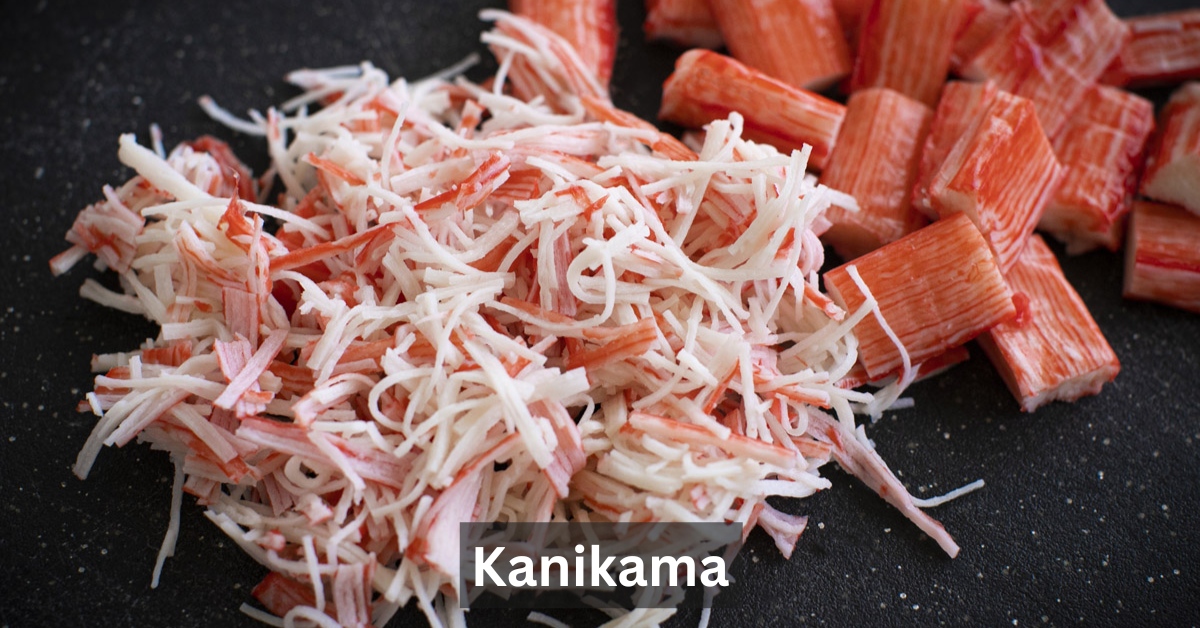Kanikama Unveiled: A Complete Guide to Imitation Crab
Kanikama, often referred to as imitation crab, is a delightful seafood alternative that has captured the hearts of food enthusiasts worldwide. This unique product, kanikama, not only resembles real crab meat in appearance but also offers a similar taste, making it a favorite in various culinary applications. The culinary significance of kanikama stretches across borders, finding its place in traditional dishes while also being embraced by modern chefs seeking to create innovative flavors.
Originally developed in Japan, kanikama has evolved into a globally recognized ingredient. Its accessibility and versatility have made it a staple in Asian cuisine, particularly in sushi rolls like the famous California roll that prominently features kanikama. As food trends continue to evolve, kanikama stands out as a healthy and affordable seafood option, appealing to both home cooks and culinary professionals alike.
What is Kanikama?
Definition of Kanikama
Kanikama is a processed seafood product made primarily from surimi, which is a fish paste derived from minced white fish, most commonly pollock. This imitation crab meat, kanikama, is engineered to mimic the texture and flavor of real crab meat, providing an affordable and versatile alternative for seafood lovers.
Explanation of Surimi and Its Role in Production
Surimi, the backbone of kanikama, has a rich history in Japanese cuisine. Traditionally, surimi was made by grinding fish into a paste, which was then flavored and formed into various shapes. In the case of kanikama, the surimi is blended with other ingredients, including starch and egg whites, to enhance its texture and appearance. The mixture is then colored to resemble the bright red hue of crab legs, completing its transformation into imitation crab, or kanikama.
The Production Process of Kanikama
Detailed Steps in Creating Kanikama from Surimi
The journey of kanikama begins with the careful selection of high-quality fish, primarily pollock, which is known for its mild flavor and flaky texture. Once the fish is deboned and washed to remove excess fat, it is minced into a fine paste. This paste becomes the surimi base for kanikama, which is then mixed with a variety of additives, including starch and flavorings, to create the desired taste and consistency.
After mixing, the surimi is extruded into long, thin shapes that resemble crab legs. These shapes are dyed red and white to achieve a realistic appearance, and the product is then cooked and packaged for distribution. This meticulous production process ensures that kanikama not only looks like crab meat but also has a satisfying texture and taste.
Quality Control and Packaging Processes
Quality control is paramount in the production of kanikama to ensure safety and consistency. Each batch of kanikama undergoes rigorous testing to check for flavor, texture, and overall quality. Once it passes inspection, kanikama is packaged for consumers, often vacuum-sealed to maintain freshness. This commitment to quality is one of the reasons kanikama remains a popular choice for those seeking imitation seafood products.
History of Kanikama
Origins in Japan and the Invention by Sugiyo Co., Ltd.
Kanikama’s origins trace back to Japan in the early 1970s when the Japanese food manufacturer Sugiyo Co., Ltd. sought to create a cost-effective alternative to real crab meat. Faced with rising prices and a growing demand for seafood, Sugiyo turned to surimi, a traditional ingredient, to craft a product that would deliver the same culinary experience as crab meat at a fraction of the cost. This innovative approach led to the creation of kanikama, quickly becoming a staple in Japanese cuisine.
Evolution and Global Spread of Kanikama
As kanikama gained popularity, its appeal transcended Japanese borders. Today, kanikama is enjoyed worldwide, featuring prominently in various cuisines. From the California roll that has become synonymous with sushi to Korean dishes like gimbap that incorporate kanikama, this imitation crab has solidified its place in global culinary traditions. The evolution of kanikama reflects broader trends in food, where affordability and versatility drive consumer choices.
Culinary Applications of Kanikama
Traditional Uses of Kanikama
Kanikama shines in traditional Asian cuisine, where it plays an essential role in many beloved dishes. In Japanese cuisine, kanikama is best known for its role in sushi rolls, particularly in the California roll, where it pairs perfectly with avocado and cucumber. Kanikama is also used in salads, providing a delightful texture and flavor. In Korean cuisine, you’ll find kanikama in gimbap, a dish that features rolled rice and vegetables, showcasing the adaptability of this seafood alternative.
Modern Innovations in Kanikama Cooking
Beyond its traditional uses, kanikama has found a place in modern culinary innovations. Chefs around the world experiment with kanikama, incorporating it into unexpected dishes such as tacos, pasta, and even ceviche. The versatility of kanikama allows for creativity in the kitchen, making it a popular choice for those looking to create unique seafood recipes. Whether enjoyed in a classic sushi setting or as part of a contemporary dish, kanikama proves to be a delightful ingredient.
Nutritional Profile: Kanikama vs. Real Crab Meat
Comparison of Nutritional Values
When considering kanikama versus real crab meat, it’s essential to examine their nutritional profiles. While both kanikama and real crab meat are low in fat and calories, real crab is a richer source of vital nutrients. For example, real crab meat is high in omega-3 fatty acids and vitamin B12, which are essential for heart health and energy production. On the other hand, kanikama, while still providing protein, contains additives and preservatives that some health-conscious consumers may wish to avoid.
Benefits of Each and Dietary Considerations
Despite the differences, both kanikama and real crab meat can fit into a healthy eating plan. Kanikama serves as a convenient source of protein and is an excellent option for those seeking affordable seafood alternatives. Its low calorie count makes kanikama a great addition to salads and sushi rolls without adding excessive calories. Real crab meat, with its higher nutrient content, is ideal for those looking to maximize their intake of essential vitamins and minerals. Understanding these distinctions can help consumers make informed dietary choices.
Advantages of Using Kanikama
Cost-Effectiveness and Accessibility of Kanikama
One of the most significant advantages of kanikama is its cost-effectiveness. Real crab meat can be prohibitively expensive, especially for premium varieties. In contrast, kanikama offers a delicious and affordable seafood option that is accessible in most grocery stores. This affordability allows more people to enjoy seafood without breaking the bank, making kanikama an attractive choice for budget-conscious consumers.
Shelf Life and Convenience in Meal Preparation
Kanikama boasts a longer shelf life than fresh crab meat, which can spoil quickly. This extended shelf life makes kanikama a convenient option for those who want to stock their kitchens with versatile seafood alternatives. Furthermore, kanikama requires no special preparation—simply thaw and incorporate it into your favorite dishes. This ease of use is another reason why kanikama has gained such popularity among home cooks and culinary professionals alike.
Fun Facts about Kanikama
Global Popularity and Cultural Significance of Kanikama
Kanikama has transcended its origins in Japan to become a beloved ingredient around the world. In many cultures, kanikama is associated with celebration and shared meals. Its versatility allows it to fit into various culinary contexts, from casual gatherings to sophisticated dining experiences.
Interesting Trivia and Statistics
Did you know that kanikama is often a staple in sushi restaurants worldwide? Many sushi lovers may not realize that the familiar taste of their favorite California roll often comes from kanikama. Additionally, kanikama has become a popular ingredient in fusion dishes, showcasing its adaptability across cuisines. The global popularity of kanikama continues to grow, reflecting the increasing demand for healthy, affordable seafood alternatives.
Delicious Recipes Featuring Kanikama
Step-by-Step Guides for Popular Kanikama Dishes
Kanikama Sushi Rolls
Create your own kanikama sushi rolls at home! Begin by preparing sushi rice and laying out a sheet of nori. Add a layer of sushi rice, followed by strips of kanikama and your choice of vegetables, such as cucumber and avocado. Roll tightly and slice into bite-sized pieces for a delicious homemade sushi experience.
Kanikama Salad
For a refreshing kanikama salad, combine chopped lettuce, diced vegetables, and flaked kanikama in a bowl. Dress with a light sesame vinaigrette for a healthy and satisfying meal that highlights the flavor of kanikama.
Kanikama Tempura
For a crispy treat, try kanikama tempura! Dip pieces of kanikama in a tempura batter and fry until golden brown. Serve with a dipping sauce for a delicious appetizer that showcases kanikama’s versatility.
Kanikama Pasta
Elevate your pasta dishes with kanikama! Toss cooked pasta with olive oil, garlic, and vegetables, then add flaked kanikama for a seafood twist that adds flavor and protein to your meal.
Kanikama: Myths vs. Facts
Addressing Common Misconceptions about Kanikama
Despite its popularity, kanikama is often misunderstood. Many people believe that all imitation crab products are unhealthy, but this is not necessarily true. Kanikama can be a nutritious addition to your diet when enjoyed in moderation. Additionally, some consumers assume that kanikama lacks flavor; however, when prepared correctly, kanikama can be a delicious component in various dishes that enhance the overall culinary experience.
Clarifying Its Health Benefits and Culinary Uses
Kanikama can indeed be a beneficial part of a balanced diet. It’s low in calories and fat while providing a decent amount of protein, making it suitable for those who are health-conscious. Moreover, its versatility allows it to be incorporated into a wide range of recipes, from sushi to salads, making it easy to enjoy kanikama regularly. As with any processed food, it’s important to read labels and choose products that use high-quality ingredients to maximize health benefits.
Conclusion
Kanikama has firmly established itself as a versatile and appealing seafood alternative in global cuisine. Its rich history, culinary applications, and nutritional benefits make it a unique ingredient that can be enjoyed in many forms. Whether you’re making traditional sushi or experimenting with new recipes, kanikama is sure to add excitement to your cooking.
We encourage readers to embrace kanikama in their kitchens, explore its myriad of uses, and discover how this delightful imitation crab can enhance both everyday meals and special occasions. With its affordability and delicious taste, kanikama is not just a substitute for crab meat; it’s a fantastic ingredient in its own right. So why not get creative and start experimenting with kanikama today? You might just find your new favorite dish!
Frequently Asked Questions
What is kanikama made from?
Kanikama is primarily made from surimi, which is fish paste derived from white fish, most commonly pollock, mixed with other ingredients to mimic the texture and flavor of crab.
Is kanikama healthy?
Kanikama can be a healthy choice when consumed in moderation. It is low in calories and fat, providing a decent source of protein. However, it’s important to be mindful of the additives used in some products.
Can you cook kanikama?
Yes! Kanikama can be enjoyed raw, as in sushi, or cooked in various dishes, such as salads, stir-fries, and tempura.
How should I store kanikama?
Unopened kanikama can be stored in the refrigerator for several days. Once opened, it’s best consumed within a few days for optimal freshness. Kanikama can also be frozen for longer storage.
What are some popular dishes using kanikama?
Popular dishes featuring kanikama include California rolls, gimbap, kanikama salad, and kanikama pasta. Its versatility allows it to be used in many creative ways.
Stay in touch to get more updates & alerts on Ancient-Artz! Thank you

